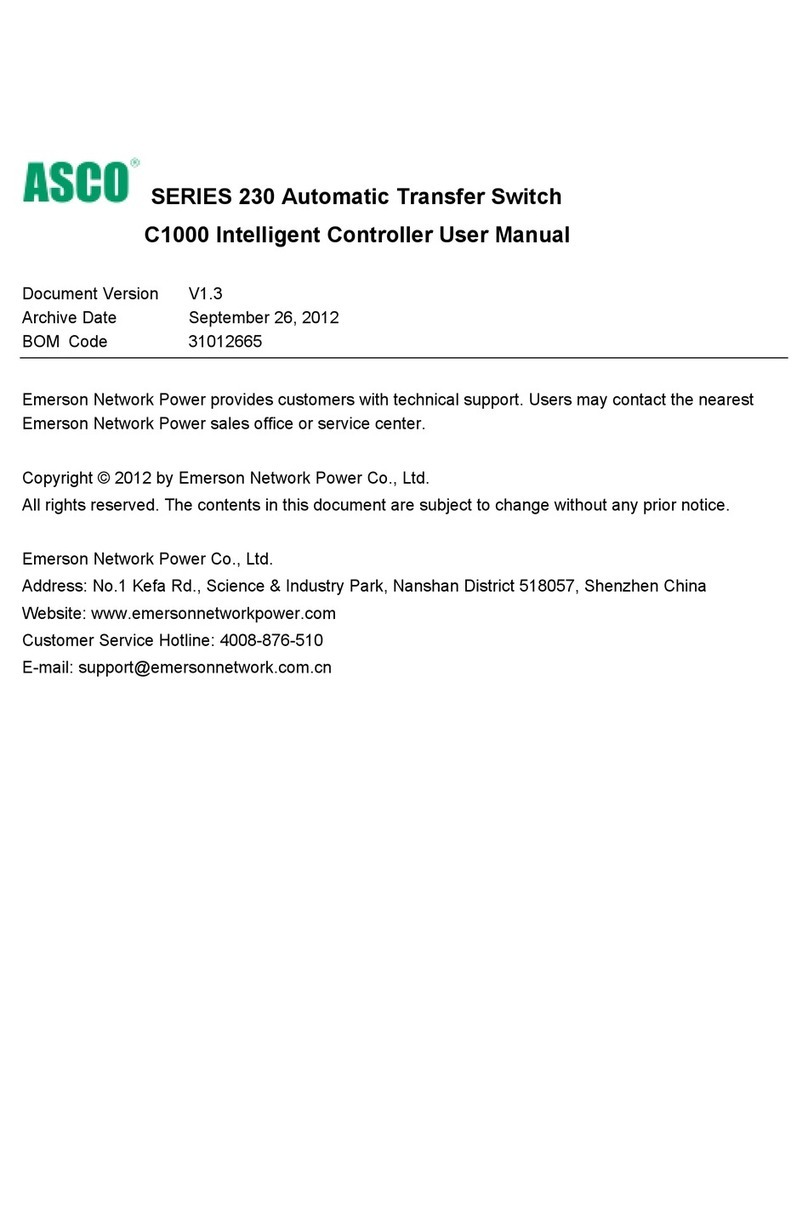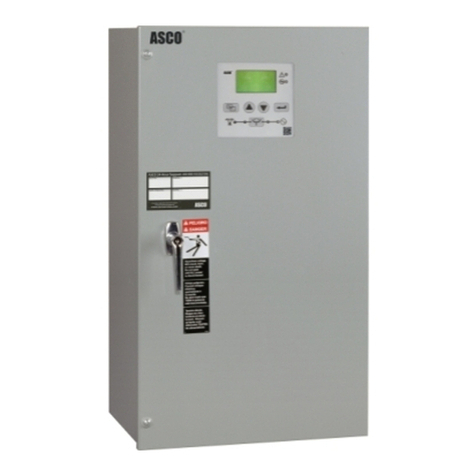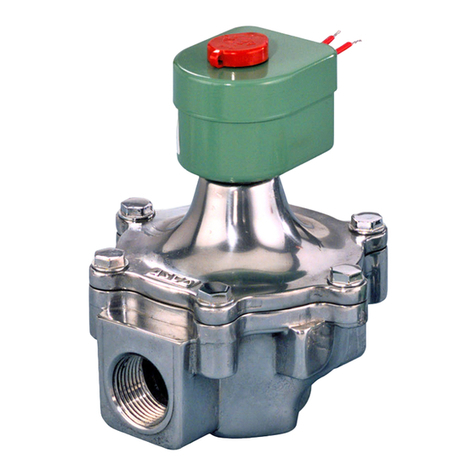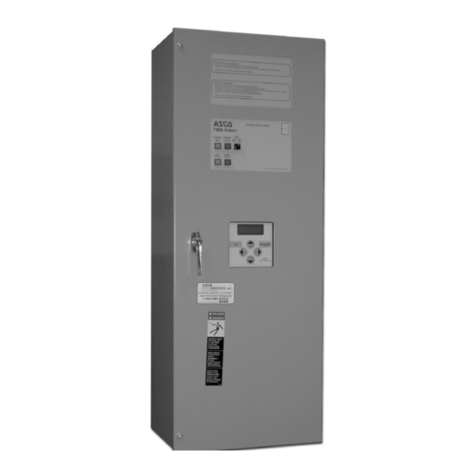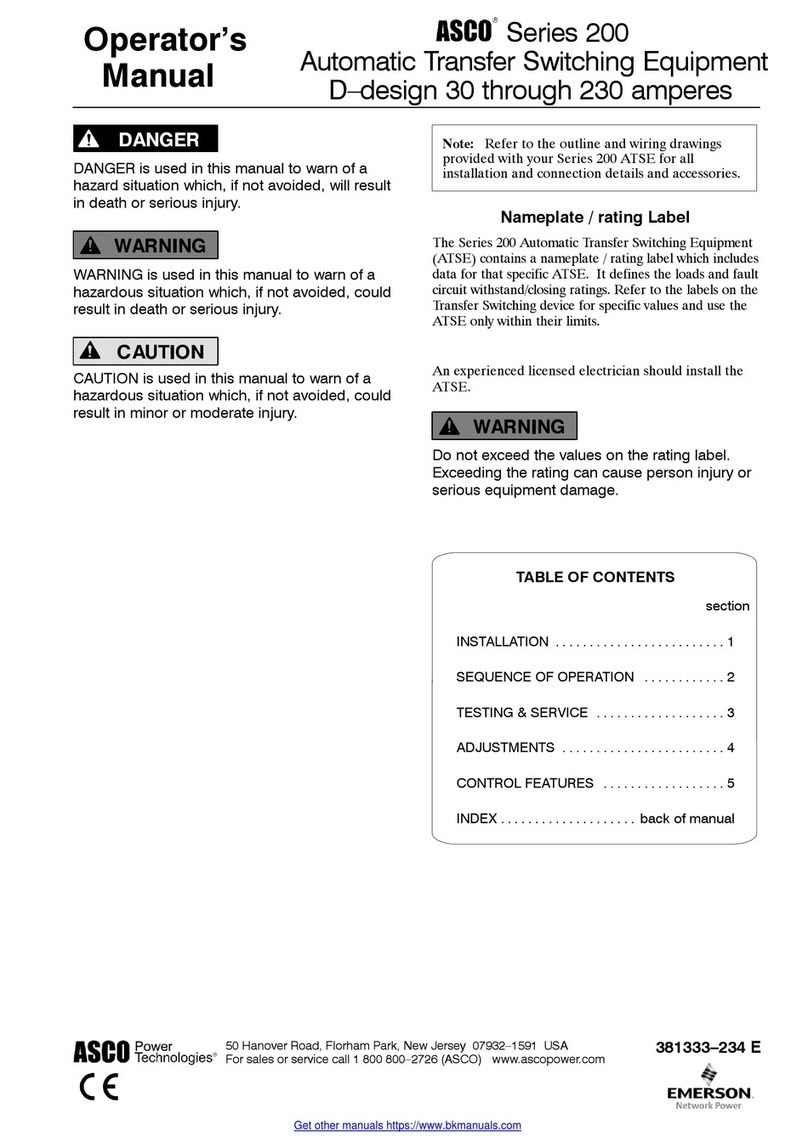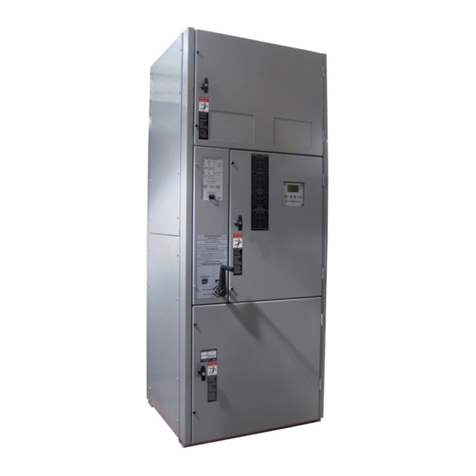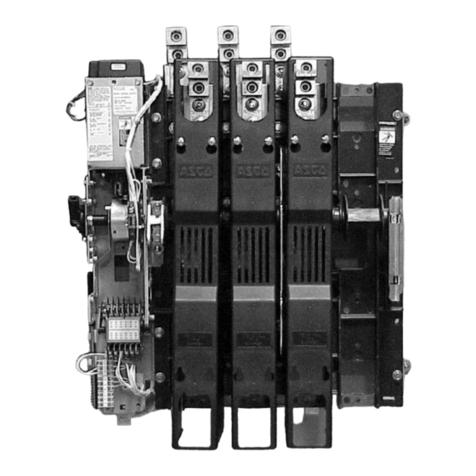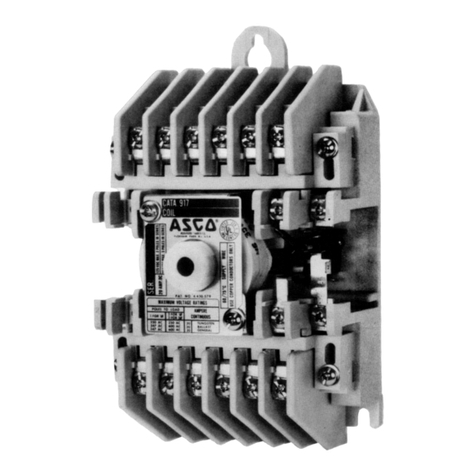
Series 4000 Automatic Transfer Switch Operator’s Manual
Page 10 ASCO Power Technologies 381333-270D
Testing & Service
TRANSFER TEST
Operate the 4000 Series ATS at least once a month by
following the five–step Electrical Operation Transfer
Test procedure on page 9.
PREVENTIVE MAINTENANCE
Reasonable care in preventive maintenance will insure
high reliability and long life for the 4000 Series ATS. An
annual preventive maintenance program is recommended
ASCO Power Services, Inc. is ASCO Power Technologies
service organization for the United States and Canada.
Call 1-800-800-2726 (ASCO) to request a service call and
information on preventive maintenance agreements.
Annual Inspection Checklist
Hazardous voltage capable of causing
shock, burns, or death is used in this switch.
Deenergize both Normal & Emergency power
sources before performing inspections!
□Clean the ATS enclosure. Brush and vacuum away
any excessive dust accumulation. Remove moisture
with a clean cloth.
□Check the transfer switch contacts. Remove the
transfer switch barriers and check contact condition.
Replace the contacts if they become pitted or worn
excessively. Reinstall the barriers carefully
□Maintain transfer switch lubrication. If the transfer
switch is subjected to severe dust or abnormal
operating conditions, renew factory lubrication on
all movements and linkages. Relubricate the
solenoid operator if the TS coil is replaced. Do not
use oil; order lubrication 625550–001 (Castrol
Endurex R4000 lubricant) for 30–230 amp., or order
lubrication kit 75-100 for 260–4000 amp. sizes.
□Check all cable connections & retighten them.
REPLACEMENT PARTS
Replacement parts are available in kit form. When ordering
parts provide the Serial No., Bill of Material No. (BOM), and
Catalog No. from the transfer switch nameplate. Contact your
local ASCO Power Technologies Sales Office or ASCO Power
Services, Inc.
In the United States and Canada
call 1 – 800 – 800 – ASCO (2726)
DISCONNECTING THE CONTROLLER
The harness disconnect plugs are furnished for repair
purposes only and should not have to be unplugged. If the
controller must be isolated, follow these steps.
Disconnecting the Plugs
Do not unplug the controller
until steps 1a or 1b is completed.
1.Observe the position of the transfer switch.
a. If the transfer switch is in the Normal position, first
place standby engine starting control in the off
position. Second, then open the emergency source
circuit breaker. Third, open the normal source circuit
breaker.
b.If the transfer switch is in the Emergency position, first
open the normal source circuit breaker. Second, place
the engine starting control in the test or run position.
Third, open the emergency source circuit breaker.
2. Separate the two quick disconnect plugs by squeezing
the latches. Do not pull on the harness wires.
Reconnecting the Plugs
Do not unplug the controller
until steps 1a or 1b is completed.
1. Observe the position of the transfer switch.
a. If the transfer switch is in the Normal position, first
be sure that both normal and emergency source
circuit breakers are open. Second, be sure that the
standby engine starting control is still in the off
position.
b. If the transfer switch is in the Emergency position,
first be sure that both normal and emergency source
circuit breakers are open.
2. The two harness plugs and sockets are keyed. Carefully
align the plugs with the sockets and press straight in
until both latches click. Close the door!
3. Restore the two sources in sequence as follows:
a. If the transfer switch is in the Normal position, first
close the normal source circuit breaker. Second, close
the emergency source circuit breaker. Third, place
the standby engine starting control in the automatic
position.
b. If the transfer switch is in the Emergency position,
first close the emergency source circuit breaker.
Second close the normal source circuit breaker.
